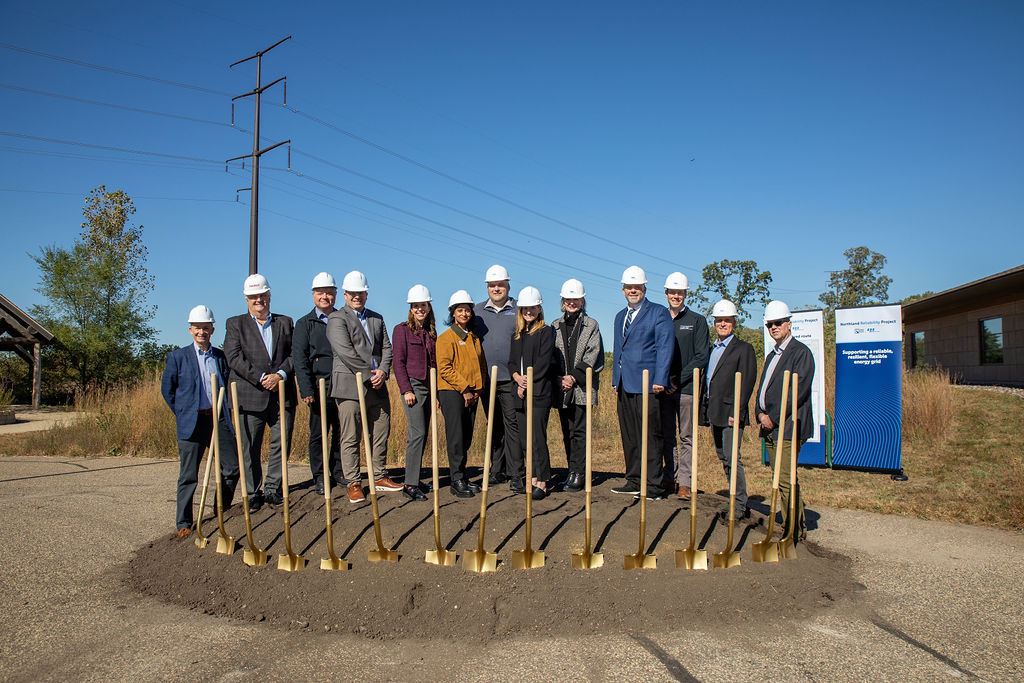Most Great River Energy member-owner cooperatives will see wholesale rates decrease in 2022
At a time when prices are rising on many products and services, Great River Energy is holding its wholesale electricity rates relatively flat into 2022 and projecting rate stability into the future.
“We spent over a decade transitioning to a portfolio of power supply and transmission resources to efficiently serve our member-owner cooperatives,” said Great River Energy President and Chief Executive Officer David Saggau. “The benefits of those decisions are now being felt. Wholesale rate stability is incredibly important to our member systems in greater Minnesota that are seeing sharp increases in other costs.”
Stable wholesale rate projections are due in large part to changes in the way Great River Energy produces and purchases energy. The cooperative plans to eliminate coal from its owned power supply resources, more than double its renewables and purchase a greater portion of energy from the Midwest energy market.
These changes put Great River Energy on-track to reduce its carbon dioxide emissions by more than 80% by 2023, surpassing Minnesota’s statewide emissions goal more than 25 years ahead of schedule.
“We are coming off a decade of prudent investments as well as some difficult decisions that have us firmly on a path of stable rates,” said Great River Energy Vice President and Chief Financial Officer Michelle Strobel. “This is critical for our member-owners, as wholesale power costs can represent a significant percentage of their overall expenses.”
Twenty of Great River Energy’s 28 member-owner cooperatives will see their wholesale rates decrease slightly in 2022. The other eight member-owners will see increases, primarily due to reductions in planned energy purchases from Great River Energy.
Great River Energy is owned by and provides wholesale electricity to 28 retail distribution cooperatives serving Minnesota and parts of Wisconsin. Each cooperative serves a unique membership with its own specific needs and expectations.
“Like Great River Energy, Kandiyohi Power Cooperative has completed important upgrades for system reliability,” said Ryan Nelson, chief executive officer for Kandiyohi Power Cooperative, which provides retail electric services to more than 8,600 members in Kandiyohi, Chippewa, Stearns and Swift counties. “Cost controls at our cooperative combined with stable wholesale rates means we can meet our members’ needs for a long time.”
In addition to stable rates, Nobles Cooperative Electric, which serves nearly 7,000 members in Nobles and Murray counties, notes that Great River Energy’s power supply strategy tempers the business risk associated with carbon dioxide emissions.
“By shifting to more renewables and market energy, we are not only receiving wholesale power at a lower cost, but our membership is protected from any future regulations on carbon dioxide emissions,” said Nobles Cooperative Electric General Manager Adam Tromblay.
Stability in the face of inflation
The U.S. Labor Department has reported that expenses such as food and rent are increasing due in part to housing shortages and supply chain troubles. Consumer Price Index increases are also exceeding economists’ forecasts.
“These economic challenges underscore the value of cooperatives,” said Great River Energy Vice President and Chief Corporate and Member Services Officer Mark Fagan. “Cooperatives are not-for-profit, member-owned businesses that can adapt to changing member needs or unexpected economic trends.”
Great River Energy’s budgets, rates and major business decisions are voted on by a board of democratically elected directors, all of whom are cooperative members and ratepayers.
“Our member-owners are clear about what they want from Great River Energy: affordable rates, reliable service and environmental stewardship,” Fagan added.
Effect on regional economy
The benefits of price stability extend beyond cooperative members and can have a stabilizing effect on the larger economy, according to Brian Hanson, who serves as president and chief executive officer of APEX, a northern Minnesota economic development nonprofit organization.
“Businesses are seeking ways to manage rising expenses right now,” Hanson said. “Price stability for a major expense such as electricity is one less barrier to innovation and growth. That’s what creates jobs and fuels healthy economies.”
Great River Energy member-owner cooperative Lake Country Power serves approximately 43,000 members across an approximately 11,000-square-mile service area in northern Minnesota.
“With costs increasing in many areas, we welcome stability on our largest annual expense,” said Lake Country Power General Manager Mark Bakk. “We will continue to serve our members responsibly by managing our expenses while continuing to invest in a safe and reliable electric system.”
This is the fourth consecutive year in which Great River Energy’s budgeted average wholesale rate has not increased for all-requirements member-owner cooperatives.
 " data-object-fit="cover">
" data-object-fit="cover">